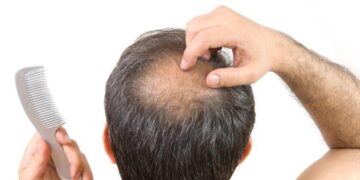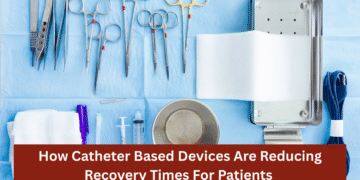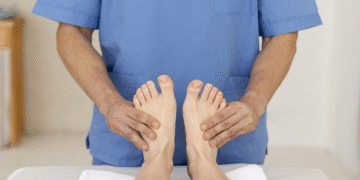Image from Unsplash
Modern work life often means long hours behind a desk, hunched over screens, barely moving except for coffee breaks or video calls. Even without heavy lifting or intense workouts, this kind of sedentary routine can leave your body sore, stiff, and surprisingly fatigued. The typical desk worker experiences tight shoulders, a stiff neck, lower back pain, and aching wrists—all consequences of immobility.
But here’s the good news: you don’t need fancy equipment, a gym membership, or professional massage therapy to ease these aches. Surprisingly simple, at-home practices can help. One emerging tool? A calming soak with Flewd, offering targeted magnesium support while addressing muscle tension naturally. Backed by growing research on magnesium chloride vs. magnesium oxide, these accessible remedies are changing how we approach muscle care from the comfort of home.
Why Desk Work Wrecks Your Body—Even If You’re “Not Active”
At first glance, desk work doesn’t seem physically demanding. But sitting for extended periods creates:
- Muscle imbalance: Tight hip flexors, overstretched glutes, and weakened core.
- Postural strain: Rounded shoulders, forward neck posture, spinal compression.
- Circulatory slowdown: Reduced blood flow to the lower body and limbs.
- Cumulative stress: Subtle daily tension that adds up week after week.
Over time, this “passive damage” leads to chronic aches, limited flexibility, and sleep-disrupting discomfort. The solution? Small, science-backed interventions that target both physical tension and nervous system stress.
1. Rethink Recovery: Passive Heat Therapy with Magnesium Soaks
While many turn to stretching or strength exercises, passive heat therapy often gets overlooked. Warm water immersion helps loosen tight muscle fibers, improve circulation, and ease joint stiffness. Add magnesium to the mix, and you boost the therapeutic effect.
Why does magnesium soak?
Magnesium plays a crucial role in regulating muscle contraction and nerve signaling. Deficiency or imbalance can contribute to cramps, tightness, and tension. Unlike oral supplements (which some people struggle to absorb), transdermal magnesium—absorbed through the skin during a soak—offers an alternative route.
Studies suggest that magnesium chloride, in particular, may penetrate the skin more efficiently than magnesium oxide, though ongoing research continues to explore this promising method of delivery.
How to do it:
- Fill a warm bath (~38°C) with a magnesium soak blend like Flewd.
- Soak for 20–30 minutes, allowing muscles to fully relax.
- Combine with soft lighting or relaxing music to activate your parasympathetic nervous system (your “rest-and-digest” mode).
Bonus: No tub? A simple foot soak can still offer noticeable relaxation and relief.
2. Micro-Movements: The New Desk Break Rule
Image from Unsplash
Traditional advice often recommends taking breaks every hour. Newer research advocates even shorter intervals—micro-movements every 20–30 minutes can prevent the build-up of stiffness far more effectively.
Science-backed desk hacks include:
- Shoulder blade squeezes (10 reps) to counter slouching
- Seated hip marches to engage core muscles
- Ankle pumps to promote leg circulation
- Spinal extensions (standing or seated) to decompress your lower back
According to the Harvard Health Publishing department, even brief standing or light movement can counteract some of the negative cardiovascular and metabolic effects of prolonged sitting.
The key is consistency: tiny, frequent movements prevent cumulative strain.
3. Active Release Through Self-Massage Tools
While professional massage offers deep relief, you can recreate much of the effect at home using simple tools:
- Foam rollers for tight hamstrings and upper back
- Massage balls or tennis balls for glutes, shoulders, and feet
- Handheld massage guns (used sparingly on tense areas)
These tools activate deep tissue release by applying gentle pressure to trigger points. Research supports myofascial release techniques as an effective way to improve range of motion and decrease muscle soreness.
Pro tip: Use these tools immediately after a magnesium soak when muscles are most pliable for maximum effect.
4. The Often-Neglected Role of Breathing
Most people don’t associate breathing exercises with muscle recovery—but they should. Chronic desk posture creates shallow, chest-dominant breathing, fueling sympathetic nervous system dominance (stress mode).
Breathwork activates your vagus nerve, improving relaxation, lowering heart rate, and releasing muscular tension.
Effective breathing techniques:
- Diaphragmatic breathing: Expand your belly with each inhale, slowly exhale fully.
- Box breathing: Inhale for 4, hold for 4, exhale for 4, hold for 4.
- 4-7-8 breathing: Inhale 4, hold 7, exhale 8.
A 2021 study published in Frontiers in Psychology demonstrated that slow breathing exercises significantly reduce muscle tension and improve perceived recovery following cognitive fatigue.
Try pairing breathwork with your magnesium soak or stretching routine for a powerful full-body reset.
5. Biohacking Your Workspace: Small Changes, Big Impact
True desk-job relief starts before soreness sets in—with prevention.
Key workspace adjustments include:
- Screen height: Keep your monitor at eye level to avoid forward head posture.
- Chair position: Feet flat, knees at hip level or slightly below.
- Keyboard height: Elbows bent at 90 degrees, wrists straight.
- Phone positioning: Use headsets instead of cradling your phone between shoulder and ear.
Incorporating a sit-stand desk or adjustable desk riser can also break the prolonged sitting cycle without disrupting productivity.
Investing in good ergonomics pays long-term dividends—fewer aches, better focus, and lower risk of chronic injury.
Building Your At-Home Muscle Care Ritual
Image from Unsplash
The beauty of these methods is their flexibility. You can easily create a personalized home routine that fits into even the busiest schedule.
| Step | Frequency | Duration |
| Micro-movements | Every 20–30 min | 1–3 min |
| Stretching | 1–2× daily | 5–10 min |
| Magnesium soak | 2–3× per week | 20–30 min |
| Self-massage | As needed | 5–10 min |
| Breathwork | Daily (evening) | 5 min |
Why Magnesium Stands Out
Unlike generic recovery hacks, magnesium plays a dual role:
- Neuromuscular function: Supports nerve transmission and muscle contraction control
- Stress modulation: Aids relaxation and parasympathetic activation
While both magnesium chloride and magnesium oxide are used in supplements, magnesium chloride is often preferred for topical use due to its greater solubility and transdermal absorption potential.
What Users Report
- “My tight shoulders feel noticeably looser after adding magnesium baths twice a week.”
- “Stretch breaks and standing reminders made my workday tension drop dramatically.”
- “I fall asleep faster on days I combine breathing exercises with my soak.”
The small steps compound into real, lasting change—without complex fitness regimens.
It’s Not About Big Workouts — It’s About Smarter Recovery
Desk jobs may seem gentle on the body compared to physical labor or intense workouts, but their hidden strain accumulates over time. The key to reversing this isn’t extreme effort—it’s consistent, accessible rituals that honour what your body needs daily.
By leveraging science-backed strategies—like magnesium-rich soaks, micro-movements, breathwork, and workspace tweaks—you give your body room to recover while still fitting self-care into a realistic routine.
So tonight, close the laptop, drop some Flewd into a warm bath, stretch gently, and breathe deeply. Your desk-weary muscles will thank you in the morning.













